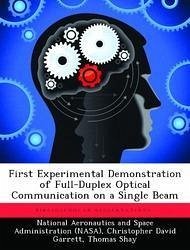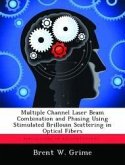The satellite industry is driven by the need to reduce costs. One way they have sought to do this is by reducing the size and weight of the satellite because of the extremely high cost per kilogram incurred launching a payload into orbit. The main difficulty in this approach is the lack of power capacity in a small satellite. One of the largest loads on a satellite's power system is the communications system. This has driven the need for a low-power communications system. This document examines a novel method of communicating optically with a low-Earth-orbit satellite from the ground without the need for a laser on the payload. The goal is to show the feasibility of such a system as a solution to the small satellite low-powered communication problem. Specially, that the system described herein: is capable of ground to low-Earth-orbit communications, has very little space-borne mass, and draws little power from the satellite. First, the system (hereafter referred to as LOWCAL "Lightweight Optical Wavelength Communication without A Laser in space") will be explained with details of the formats used and the link budgets. Discussions will be presented on the development of some of the system hardware (the laser diode driver, liquid crystal driver, and decision electronics for both the up and down links.) Finally, experimental test results of the entire system operating in a laboratory environment are presented and compared to theory. The results of the laboratory experiment support the original thesis: retro-modulated optical communications can meet the needs of the small satellite community. The system is capable of 10-kbps communication, has low space-borne mass, and draws little power from the satellite (less than 100-mW measured for the laboratory experiment, less than 1.5-W calculated for the Shuttle experiment).
Hinweis: Dieser Artikel kann nur an eine deutsche Lieferadresse ausgeliefert werden.
Hinweis: Dieser Artikel kann nur an eine deutsche Lieferadresse ausgeliefert werden.








